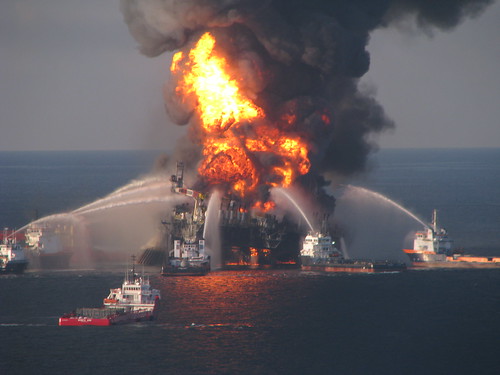by Alex Evans | Jun 22, 2010 | Climate and resource scarcity
Hard to argue with this one from Monbiot:
Call me a hard-hearted bastard, but I’m finding it difficult to summon up the sympathy demanded by the institutional investors now threatening to sue BP. They claim that the company inflated its share price by misrepresenting its safety record. I don’t know whether this is true, but I do know that the investors did all they could not to find out. They have just been presented with the bill for the years they spent shouting down anyone who questioned the company.
They might not have been warned by BP, but they were warned repeatedly by environmental groups and ethical investment funds. Every year, at BP’s annual general meetings, they were invited to ask the firm to provide more information about the environmental and social risks it was taking. Every year they voted instead for BP to keep them in the dark. While relying on this company for a disproportionate share of their income (BP pays 12% of all UK firms’ dividends), they refused to hold it to account.
It’s not as if the warning signs were hard to spot. One of them is splashed across the front page of BP’s 2009 annual review: the title is “Operating at the energy frontiers”. Like all multinational oil companies, BP has been shut out of the easy fields by the decline of its old reserves and the rising power of state-owned companies. So, to keep the money flowing, BP takes risks that other companies won’t contemplate. “Risk,” the review states, “remains a key issue for every business, but at BP it is fundamental to what we do. We operate at the frontiers of the energy industry, in an environment where attitude to risk is key … We continue to show our ability to take on and manage risk, doing the difficult things that others either can’t do or choose not to do.”
by David Steven | May 3, 2010 | Middle East and North Africa

From Cumberland Advisors, a sobering analysis of the possible fallout from the BP oil spill in the Gulf of Mexico. Three bleak scenarios are set out. According to the report, there is no ‘good’ outcome at this stage:
The Bad.
Containment chambers are put in place and they catch the outflow from the three ruptures that are currently pouring 200,000 gallons of oil into the Gulf every day. If this works, it will take until June to complete. The chambers are 30-foot-high steel configurations that must be placed on the ocean floor at a depth of one mile. This has never been done before. If early containment is successful, the damages from this accident will be in the tens of billions. The cleanup will take years. The economic impact will be in the five states that have frontal coastline on the Gulf of Mexico: Texas, Louisiana, Mississippi, Alabama, and Florida.
The Worse.
The containment attempts fail and oil spews for months, until a new well can successfully be drilled to a depth of 13000 feet below the 5000-foot-deep ocean floor, and then concrete and mud are injected into the existing ruptured well until it is successfully closed and sealed. Work on this approach is already commencing. Timeframe for success is at least three months. Note the new well will have to come within about 20 feet of the existing point where the original well enters the reservoir at a distance of 3.5 miles from the surface drilling rig. Damages by this time may be measured in the hundreds of billions. Cleanup will take many, many years. Tourism, fishing, all related industries may be fundamentally changed for as much as a generation. Spread to Mexico and other Gulf geography is possible.
The Ugliest.
This spew stoppage takes longer to reach a full closure; the subsequent cleanup may take a decade. The Gulf becomes a damaged sea for a generation. The oil slick leaks beyond the western Florida coast, enters the Gulfstream and reaches the eastern coast of the United States and beyond. Use your imagination for the rest of the damage. Monetary cost is now measured in the many hundreds of billions of dollars.

